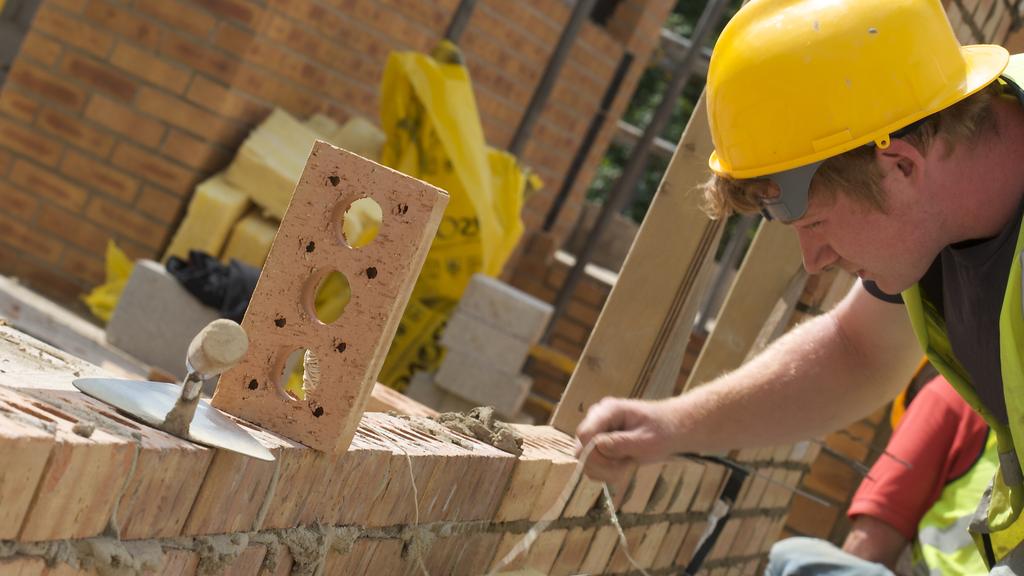Housing looms as election battleground but there are no quick fixes

Even starting to address the housing crisis requires a holistic and multifaceted approach.
In the wake of the federal budget, it is clear that housing will be a major focal point in the upcoming federal election. For the first time, the Budget Papers dedicated an entire chapter – 42 pages – to the housing problem.
They laid out the problem in stark terms.
“Australia has a housing shortage. There are not enough homes being built in the right areas to meet the needs of our communities. This statement focuses on the reasons for the current under-supply of housing, how it affects affordability, and the changes required to more quickly unlock supply to meet the housing needs of all Australians.”
The budget lists several measures to tackle the issue, including $1.9bn in government-backed loans for social and affordable housing, an additional $1bn to support new housing infrastructure across the states and territories, a $1.9bn boost to support a 10 per cent increase in Commonwealth Rent Assistance, and $423m towards the national agreement on social housing and homelessness.
Two days later, in his budget reply, opposition leader Peter Dutton also emphasised the housing crisis – though his solutions differ. “We’re also facing a housing crisis … Australians are struggling to find homes to rent and buy – and not always due to a lack of money,” he said.

Adrian Harrington.
Mr Dutton proposed three immediate solutions to housing challenges: allowing first-home buyers to access up to $50,000 from their superannuation for their first home, reducing migration to ease demand, and implementing a two-year ban on foreign property buyers.
More proposals from the Coalition are expected in the coming months.
The Greens, who could potentially hold the balance of power in the next parliament, are championing renters. Their plan includes enhancing renter’s rights, enforcing a two-year rent freeze followed by a cap limiting rent increases to 2 per cent every two years, cutting tax incentives for property investors, and setting up a government-owned public housing developer to build homes to rent or sell at well below market prices.
The backdrop to these competing plans is a housing crisis that has been brewing for years, exacerbated by various short-term pressures.
The National Housing Supply and Affordability Council was blunt in its own report. It is a longstanding crisis, fundamentally driven by the failure to deliver enough housing of all types – from social housing through to market homeownership. At its heart, this crisis is about insufficient supply, but many contributing factors are making it more acute – the resumption of migration at pace, rising interest rates, skills shortages, elevated construction company insolvencies, weak consumer confidence and cost inflation to name just a few,” the council said.
This is part of a longer pattern of crises which have hit housing. Post-World War II, the Commonwealth Housing Commission estimated a shortage of 300,000 dwellings, prompting a surge in housing construction, much of which was backed by the federal government. Homeownership rates rose significantly from about 50 per cent to more than 70 per cent by the mid-1960s.
Nor is the current housing crisis confined to Australia.
The National Housing Federation, which represents English housing associations (the equivalent of our community housing providers), estimated that 8.5 million people could not access adequate housing at the start of this year.
In Canada, the Housing Affordability Index hit its highest level since 1982, prompting the Canadian government to unveil a plan – Solving the Housing Crisis: Canada’s Housing Plan – that has strong parallels locally as it is aiming to unlock 3.87 million new homes by 2031.
If it sounds familiar, our own federal government target is for 1.2 million homes by 2029 or 240,000 homes per year. Unfortunately, given our current construction pace, we’re unlikely to come close to reaching that goal.
The National Housing Supply and Affordability Council projects just 903,000 new market housing units and 40,000 social and affordable dwellings will be built by then.
Even starting to address the housing crisis requires a holistic and multifaceted approach as so many forces buffet the industry. A simple split of viewing housing exclusively as either a social benefit or a market-driven commodity oversimplifies the equation.
Housing in fact has a dual role: it offers essential shelter, a fundamental need for all, while also serving as an investment asset in the financial system. Understanding the social and economic drivers of housing is fundamental to working out what to do.
On the one hand, there is no shortage of demand across the entire housing spectrum. Crisis and emergency accommodation are filled every night, waiting lists for social housing are at record levels, while vacancy rates are near record lows.
Yet there’s a shortfall in constructing diverse housing types across most locations.
Why?
On the social front, there has been chronic under-investment in social housing by both federal and state governments. But this is not new.
Over the past three decades, the share of social housing stock as a proportion of the total has steadily declined. Conversely, the private market supply has recently undergone a significant decline.
Annualised housing approvals are stagnating at about 150,000 per year, a level not seen since 2012. Added to that, housing completions now surpass new starts and approvals, indicating a further contraction in the pipeline – whatever policy fixes are in place longer term.
Although planning delays – the bugbear of developers and worth fixing – play a role, they are not the primary issue.
In fact, the economic feasibility of new housing development in the private market poses a significant challenge.
Those who believe developers can simply generate supply without achieving the appropriate returns misunderstand market reality.
On the ground, land costs are high, finance is costly, and construction inputs – both materials and labour – are elevated, though some material prices have slightly eased recently with the normalisation of post-Covid supply chain disruptions.
Advocates for various quick fixes must understand that housing supply tends to be relatively inelastic.
Trying to expand new supply swiftly encounters challenges such as land availability, stubborn planning approval processes, and long construction lead times.
The only ways forward are short- and long-term strategies that address both demand and supply issues. And we cannot just focus on one particular housing problem.
The National Housing Supply and Affordability Council has identified 10 focus areas for improving housing outcomes, spanning ways to cut homelessness, bettering the rental market, to addressing complexities across regions and in the multi-layered tax system.
Our federal government, regardless of who is in power, must demonstrate leadership and ensure there is a comprehensive national plan to address the housing crisis.
But, ultimately any solution will require collaboration among all levels of government, the private sector, institutions, and not-for-profit community and faith-based housing providers to create a well-functioning system that meets Australia’s needs.
Adrian Harrington is the former chair of the National Housing Finance & Investment Corporation now called Housing Australia and is NSW chair of Housing All Australians.







